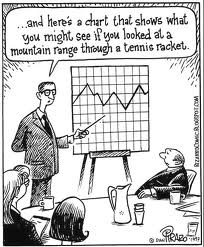Yesterday, part 1 of Publishing Buzz: What’s Really Going on with Hugh Howey’s Author Earnings Report gave a brief overview of one self-published author’s attempt to understand the numbers behind e-book sales on Amazon. Now let’s check out what other people had to say about Howey’s data and methods.
Statistical Issues
Others have taken issue with the report from a purely statistical perspective. A blogger at DearAuthor.com points out the following issues:
- The data is from Amazon only. It is not appropriate to extrapolate findings from Amazon’s data to all other book distributors. Amazon is a well-known online retailor – their e-book sales may be significantly different from brick and mortar/online stores like B&N.
- The data is from a single 24 hour period (Jan. 28-29). Although this type of study, called a “cross-section,” is useful, it is vulnerable to biases. For example, books for February are likely to have been released on January 27th or 28th, which could affect which books were on the bestseller list that day.
- Cross-sectional studies are not great for demonstrating trends. It’s like having a single data point on a graph. You can’t make a line in either direction from a single data point. Howey cannot claim that his report indicates the rising superiority of indie publishing – he can only say that on this particular day the e-book market in these particular genres looked pretty good for indie authors.
Dana Beth Weinberg, a sociology professor at Queens College who studies the way digitization is changing the book industry, expressed her own concerns:
- Howey’s sample only represents the top 1.5%-4% of eBooks on Amazon. There is no record of the authors who never make those bestseller lists. Weinberg’s own report about author earnings was largely derided because it focused on indie authors as a whole and did not take into account the successes. According to her, Howey is catering toward what people want to hear by focusing on impressive outliers.
- Weinberg’s own self-published book would not have been included in the data because the rating she had that day (roughly #368,000) does not equate to even one book sold per day. This kind of non-sale was excluded from Howey’s data and analysis. If these non-sales were included as “zeros” in the calculations, indie author sales and earnings would not have looked quite so impressive.
Finally, self-published author Courtney Milan points out that Author Earnings is a model, not a reality. As such, Howey should have compared his modeled author earnings with actual author earnings to verify that his model was accurate. After comparing her own sales records to the estimates in Howey’s report, Milan noted that the estimates were off by roughly 40%. Although she thinks the model could still work, she cautions readers that it is not capable of precise comparisons Although Howey’s method of estimating book sales based on bestseller rankings is creative, it is no substitute for actual sales data.
Since these critiques, Howey has published two additional reports, the 50k Amazon Report , which expands his data sample to nearly every e-book on the bestseller list, and the B&N Report, which analyzes data from Barnes & Noble’s best-selling ebooks in the Mystery, Thriller, Romance, and Science Fiction/Fantasy/Horror genres.
Whether or not you entirely believe his pretty amazing claims, Howey’s report called for more transparency in e-book sales figures in a way that got everyone talking. Amazon and B&N have not responded to the challenge – and they may not for a long time – but indie publishers around the world are starting to consider ways to get the information they need without going through the traditional channels. If you go to the Author Earnings website, you can even report your own sales and income in order to add to his data set. With more data points and more reports, some of the initial issues with the Amazon 7K Report could be resolved.
What do you think? What would you like to see from a report like Author Earnings?

